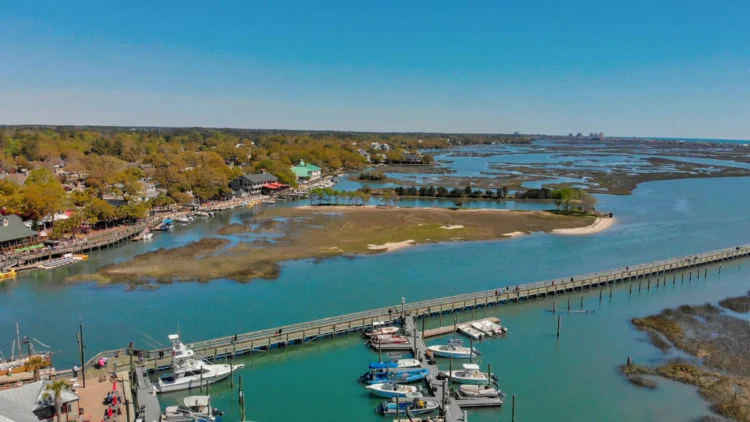South Carolina, known for its picturesque beaches, rich history, and Southern hospitality, holds undeniable appeal for residents and tourists alike. Yet, like any state, it has areas that face greater challenges than others. This article aims to shed light on the five worst places to live in South Carolina, providing essential information for anyone considering relocating to the Palmetto State.
Methodology
To determine the most challenging places to live in South Carolina, we considered the following key factors:
- Crime Rates: Data from the FBI’s Uniform Crime Reporting (UCR) program was used, with a focus on both violent crimes (murder, assault, robbery) and property crimes (burglary, theft).
- Poverty Levels: US Census Bureau statistics revealed the percentage of the population living below the poverty line.
- Education: School quality, graduation rates, and educational attainment levels were examined.
- Employment Opportunities: Unemployment rates and the availability of well-paying jobs were considered.
- Cost of Living: We evaluated the affordability of housing, groceries, transportation, and other essential expenses.
The 5 Worst Places to Live in South Carolina
1. Orangeburg
- Key Statistics:
- Violent Crime Rate: 2,035 incidents per 100,000 residents (significantly higher than the national average)
- Poverty Rate: Over 30%
- High School Graduation Rate: Well below the state average
- Explanation: Orangeburg consistently ranks high in lists of South Carolina’s most dangerous cities. Its alarming crime rates, coupled with widespread poverty and subpar educational outcomes, make it a challenging place to reside. The city struggles with socioeconomic issues that contribute to the high incidence of crime.
- Mitigating Factors: Orangeburg is home to two universities, which offer some cultural and economic benefits to the area.
2. North Charleston
- Key Statistics:
- Property Crime Rate: Exceeds the national average by a considerable margin
- Poverty Rate: Approximately 20%
- Unemployment Rate: Higher than the state average
- Explanation: Elevated property crime rates, coupled with higher than average unemployment and poverty levels create a less favorable living environment in North Charleston. While it offers proximity to the greater Charleston area, the city itself faces socioeconomic challenges that can impact residents’ quality of life.
- Mitigating Factors: North Charleston benefits by being part of the greater Charleston metro area, which has a stronger economy and more diverse job opportunities.
3. Myrtle Beach
- Key Statistics:
- High Property Crime Rate
- Seasonal Economy: Significant fluctuations in employment and population
- High Cost of Living Relative to Income Levels
- Explanation: While renowned as a popular tourist destination, Myrtle Beach has issues that make it less desirable for year-round residents. Property crime is a concern, and the seasonal nature of its economy leads to instability in job availability and income. Additionally, the cost of living can be disproportionately high compared to the average wages in the area.
- Mitigating Factors: The abundance of tourism-related jobs can be a draw for some, and the coastal location offers recreational benefits.
4. Florence
- Key Statistics:
- Violent Crime Rate: Higher than the national average
- Poverty Rate: Exceeds 25%
- Limited Economic Opportunities
- Explanation: Florence grapples with high crime, widespread poverty, and a lack of diverse, well-paying jobs. These factors combine to create a difficult environment for many residents seeking a stable and prosperous life.
- Mitigating Factors: Florence acts as a regional hub for healthcare and some manufacturing, providing a base for employment.
5. Sumter
- Key Statistics:
- Violent and Property Crime Rates: Elevated compared to the national average
- High Poverty Rate: Over 25%
- Below-Average Educational Outcomes
- Explanation: Sumter experiences higher than average crime rates (both violent and property-related), deep-rooted poverty, and schools that lag behind state standards. This combination makes it a less-than-ideal place to establish a home.
- Mitigating Factors: Sumter’s proximity to Shaw Air Force Base provides some economic stability for the area.
Important Considerations
- Subjectivity: The concept of “worst” is subjective. What may be a major drawback for one person could be less important to another. Individual needs and priorities play a significant role in deciding what makes a place undesirable.
- Positive Aspects: Even cities with challenges likely have redeeming qualities. It’s essential to consider the whole picture, including community assets, natural beauty, or cultural attractions, that may hold value
- The Importance of Research: Making a major decision like relocating requires thorough research. Rely on a variety of sources, including statistics, local news, and resident reviews, to gain a balanced perspective on any potential location.
Conclusion
South Carolina, for the most part, is a state with a high quality of life. However, understanding the specific challenges faced by some of its cities is essential for those considering a move. This information empowers prospective residents to make well-informed decisions that align with their individual needs and priorities.
Sources:
- US Census Bureau: https://www.census.gov/
- Niche (for school quality and other rankings): https://www.niche.com/
Please Note: It is crucial to remember that cities can change over time. These rankings are based on currently available data and may evolve as circumstances shift.



